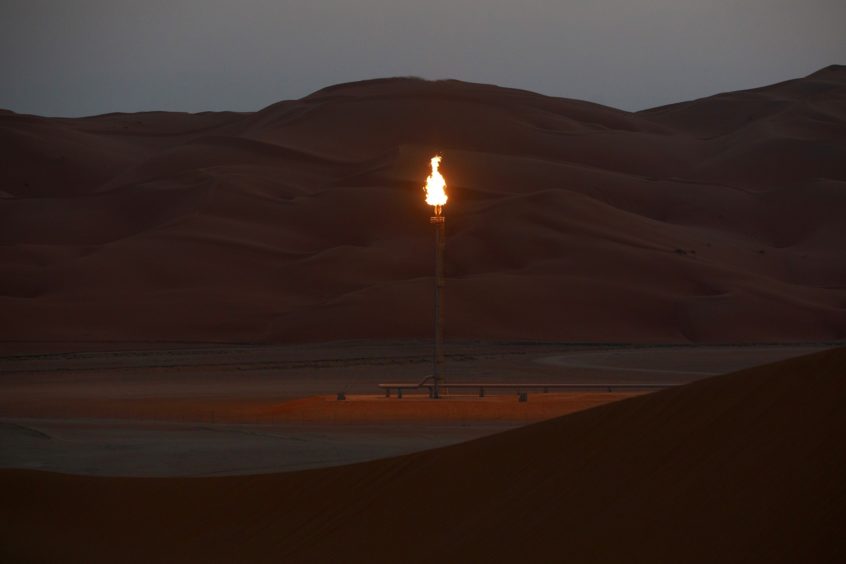
Oil started the week strongly after Saudi Arabia and other OPEC+ members signaled intentions to keep supplies constrained for the rest of the year, while U.S. tensions with Iran ratcheted up as President Donald Trump threatened the country in a tweet.
Futures in New York rose as much as 1.7%, following a 1.8% gain last week. Saudi energy minister Khalid Al-Falih urged members of the alliance meeting in Jeddah to “stay the course” on output cuts. Meanwhile, just weeks after the U.S. increased sanctions pressure on Iranian crude exports, Trump tweeted “If Iran wants to fight, that will be the official end of Iran.”
Oil has rallied about 40% this year as supply cuts have outweighed concerns about slowing demand growth caused by trade tensions between the U.S. and China. Saudi Arabia and fellow oil producers have to balance their desire to maintain high crude prices with the need to fill any supply gaps caused by rising geopolitical risks in the Middle East and disruptions in Venezuela, Libya and Iran.
“Crude prices are rising because investors view OPEC wants to tighten supply and demand to maintain current prices,” Takayuki Nogami, the chief economist at Japan Oil, Gas and Metals National Corp. in Tokyo., said by phone. “While the outcome of the OPEC+ meeting was in line with expectations, it’s still uncertain” what the producers will ultimately decide on production cuts in June, Nogami said.
West Texas Intermediate crude for June delivery rose as much as $1.05 to $63.81 a barrel on the New York Mercantile Exchange and traded at $63.60 at 12:26 p.m. in Singapore. The contract added 1.8% last week, the biggest weekly increase since early April. The contract expires after end of trading Tuesday. The more actively traded July contract rose to as high as $63.96.
Brent for July settlement rose $1.02 cents to $73.23 a barrel on the London-based ICE Futures Europe exchange. The contract added 2.3% last week. The global crude benchmark traded at a $9.46 premium to WTI for the same month.
“We need to stay the course, and do that for the weeks and months to come,” Saudi Arabia’s Al-Falih told reporters after the meeting in Jeddah. The kingdom “isn’t fooled” by crude prices and believes the market is still fragile.
Meanwhile, Russian Energy Minister Alexander Novak sent mixed signals. Russia, the most important non-OPEC partner in the coalition, is ready to consider easing production cuts if the market needs more crude, Novak said. Still, Russia would comply with any agreed output limit in the second half of 2019, he said.
In the U.S., working oil rigs fell by three to 802 last week, the lowest since March 2018, according to data released Friday by oilfield-services provider Baker Hughes. Government data last week showed U.S. crude production dropped for the second week to 12.1 million barrels a day.
Other oil-market news: Saudi Arabia isn’t seeing as much demand for oil as expected from Iran’s customers, as a lot of crude has been leaving the Persian nation without being accounted for since the U.S. imposed sanctions on Tehran. Saudi Arabia does not want a war with Iran but will respond “with strength and determination” if Iran decides to start one, a top Saudi official said on Sunday. The evacuation of some Exxon Mobil Corp. workers from Iraq is “ unacceptable and unwarranted” because it has nothing to do with the security situation in the southern part of the country, according the energy minister. Money managers cut their bullish Brent and WTI bets, ICE Futures Europe and CFTC futures and options data on four contracts showed.